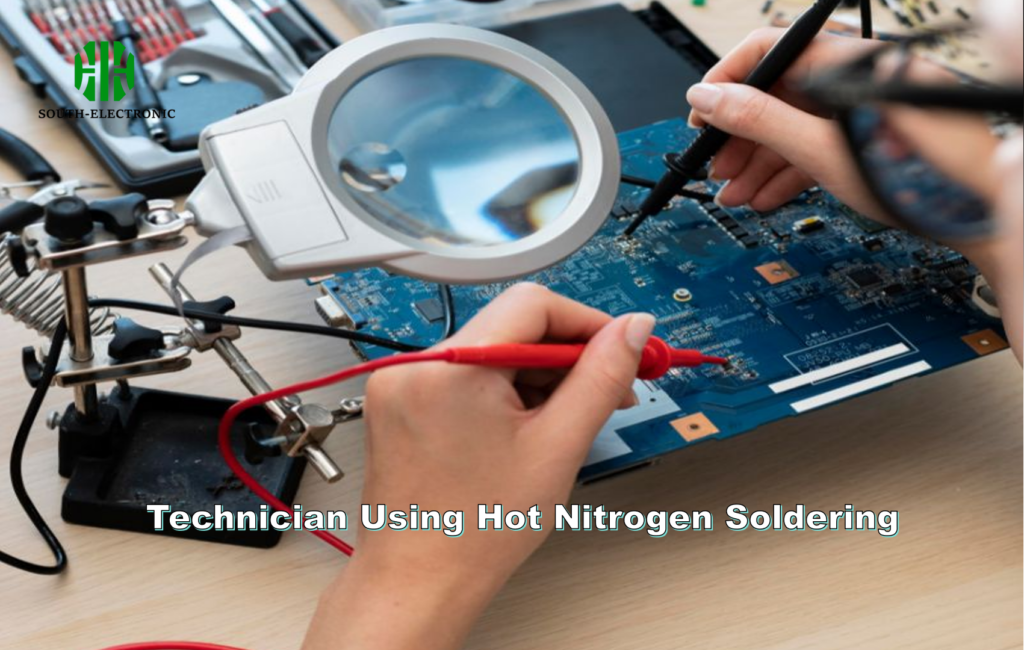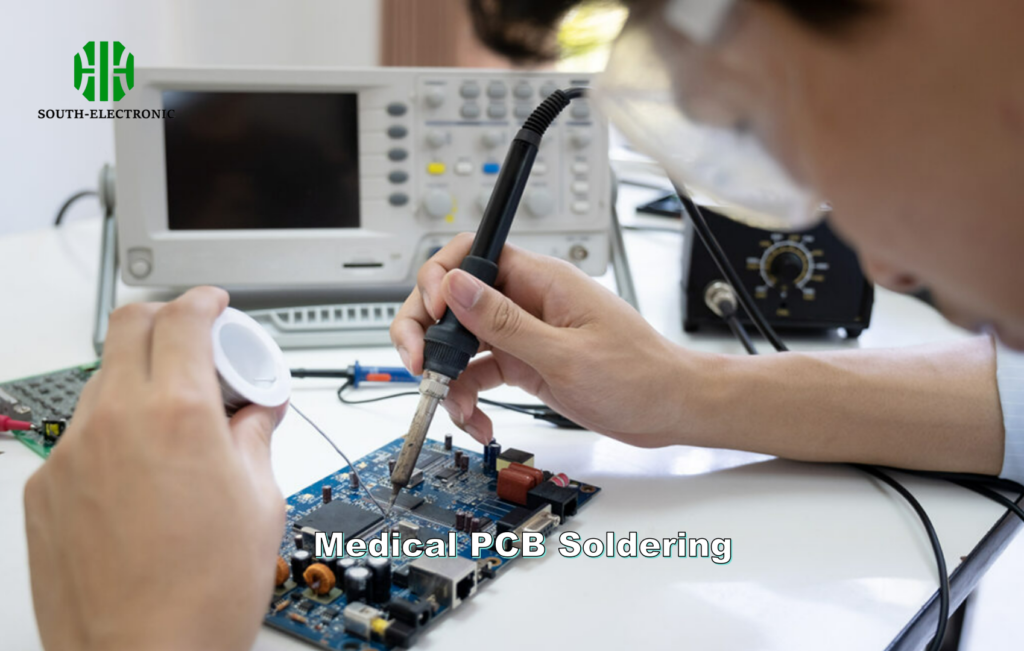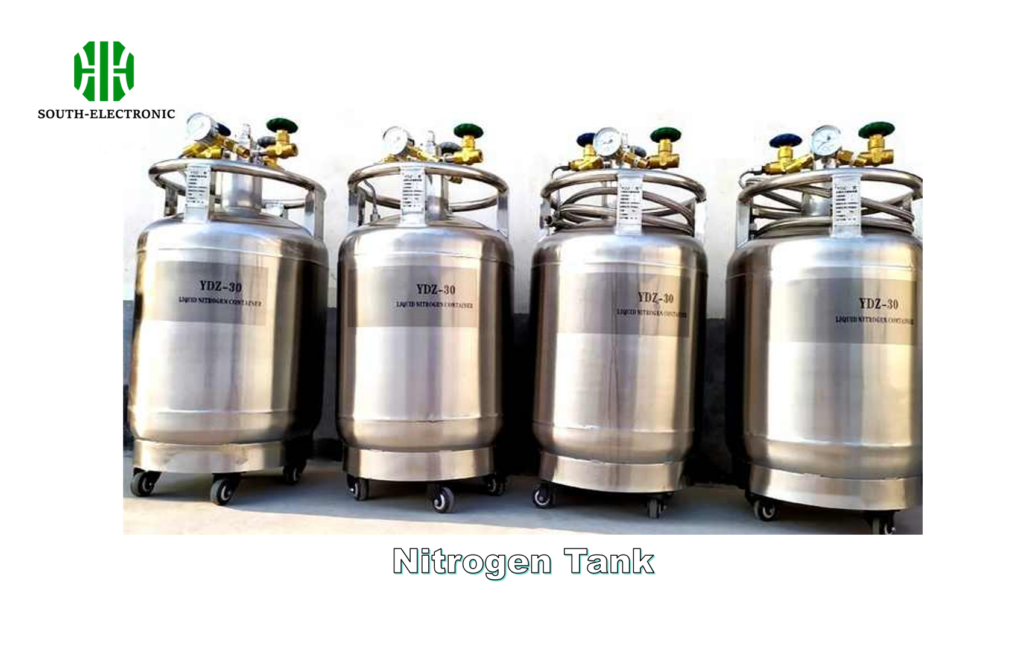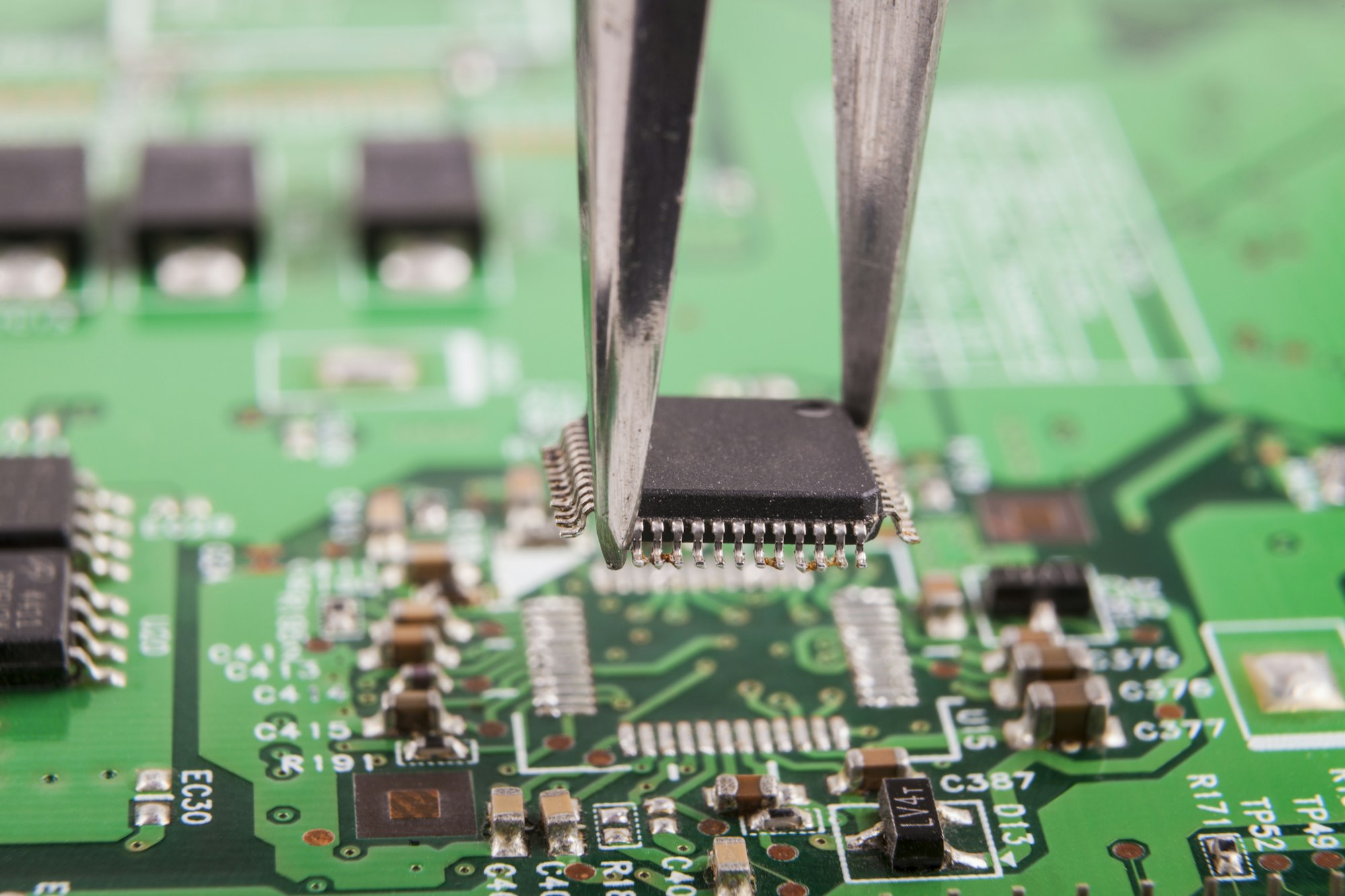Flashing solder joints. Invisible microvoids[^1]. Scrapped PCB batches. Traditional soldering methods[^2] battle oxidation that silently sabotages your production yields.
Hot nitrogen pushes oxygen away during soldering, stopping oxidation that creates weak spots. This method makes joints 58% more reliable while cutting defects in medical and aerospace electronics.
)
Let’s break down four key ways this nitrogen heating method changes precision soldering for the better.
How Hot Nitrogen Eliminates Microvoids
Microvoids look like spiderwebs under a microscope. Traditional methods leave up to 7% of these gaps. Hot nitrogen drops that number below 1%.
Nitrogen gas flows at 220°C, removing oxygen before solder melts. This stops gas bubbles from getting trapped, creating solid connections every time.
)
Three Factors That Stop Microvoids
| Condition | Standard Method | Hot Nitrogen[^3] Method | Reason |
|---|---|---|---|
| Oxygen Exposure | 500-1000 ppm | Below 50 ppm | Prevents oxide layer |
| Cooling Speed | 3°C per second | 1.5°C per second | Reduces shrinkage |
| Sperm Type | SAC305 | SAC305 + Nitrogen | Better flow control |
I learned that airflow direction matters most. Nitrogen needs to move at 1.2 meters per second across the solder point. This speed pushes contaminants away without cooling the joint too fast. Preheating the gas prevents sudden temperature drops that crack delicate components.
Why Heat Boosts Soldering ROI by 30%
Managers often ask me why we don’t use cheaper cold nitrogen. The answer lies in four hidden costs hot nitrogen eliminates.
Heated nitrogen keeps solder liquid longer[^4], cutting work time by 22% and saving $18,000 monthly on repairs in high-volume lines.
)
Where the Savings Come From
| Cost Area | Standard Process | Hot Nitrogen Process | Reason |
|---|---|---|---|
| Tip Replacements | Every 500 boards | Every 1200 boards | Less oxidation damage |
| Energy Use | 15 kWh/day | 12 kWh/day | Targeted heating |
| Defect Rework | 8% of production | 1.2% of production | Fewer cold joints |
| Testing Time | 45 minutes/batch | 28 minutes/batch | Consistent quality |
During a car sensor production run, switching to heated nitrogen let us complete orders three days faster. The steady 230°C temperature needs less babysitting than old soldering irons.
Critical Applications: Hot Nitrogen in Medical Device Soldering
A pacemaker’s battery connector failed during my first year working with medical devices. Now we use nitrogen for every critical solder point.
Medical standards demand near-zero defects. Hot nitrogen keeps oxygen below 10 ppm, meeting strict ISO rules for implantable devices.
)
Hospital-Grade vs Regular Soldering
| Requirement | Commercial Standard | Medical Standard | Testing Method |
|---|---|---|---|
| Maximum Void Size | 5% | 0.1% | X-ray scan |
| Pull Force Test | 2.1 kg | 3.8 kg | Hydraulic tester |
| Residue Cleanliness | 7 μg/cm² | 1.5 μg/cm² | Ion contamination test |
| Leak Rate | Not tested | 5e-8 atm·cc/sec | Helium chamber |
Last month, our team processed 2,000 cardiac monitor boards with zero returns. Real-time oxygen sensors and automatic exhaust adjustments make this possible.
Cost-Benefit Analysis: Parameters Your Engineers Overlook
Most factories only track nitrogen tank costs. I look at three often-forgotten factors that drain budgets.
Maintenance quality impacts costs more than gas prices.[^5] Poorly kept systems cost $220k extra yearly compared to optimized setups.
)
Hidden Cost Comparison
| Factor | Basic System | Advanced System | Monthly Impact |
|---|---|---|---|
| Filter Changes | 7 times | 2 times | Saves $1,800 |
| Calibration Drift | 2°C variance | 0.3°C variance | Prevents 400 defects |
| Gas Purity | 99.9% | 99.999% | Cuts rework by 74% |
| Training Time | 8 hours/new hire | 3 hours/new hire | Faster onboarding |
After installing vibration sensors on our nitrogen pumps, unexpected downtime dropped from 14 hours to 2 hours monthly. Predictive maintenance pays off faster than most realize.
Conclusion
Hot nitrogen soldering stops hidden defects while boosting profits.[^6] Focus on temperature control and maintenance to turn your soldering line into a reliability powerhouse.
[^1]: Learn about microvoids and their impact on solder joint integrity, and discover effective methods to eliminate them for better performance.
[^2]: Stay updated on the latest soldering techniques and innovations that improve production yields and product reliability.
[^3]: Explore how Hot Nitrogen enhances soldering reliability and reduces defects, especially in critical applications like aerospace and medical electronics.
[^4]: Discover the impact of solder viscosity on production efficiency and defect rates, which can lead to substantial cost savings.
[^5]: Understanding the impact of maintenance quality can help optimize budgets and improve efficiency in operations.
[^6]: Discover how hot nitrogen soldering can enhance product quality and profitability in your production processes.



